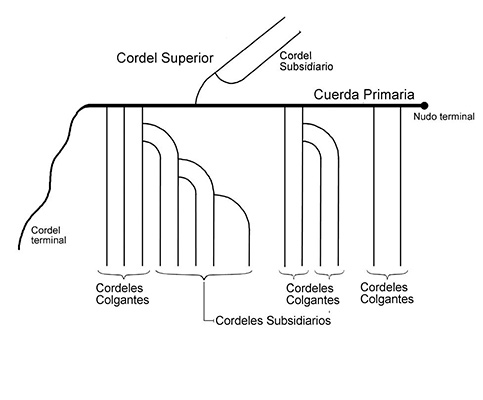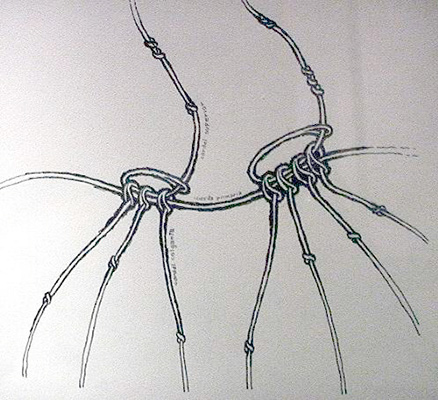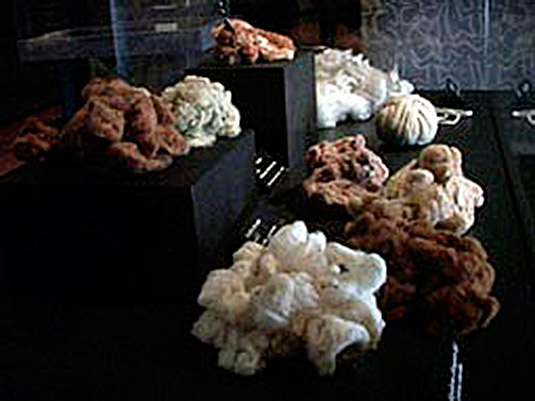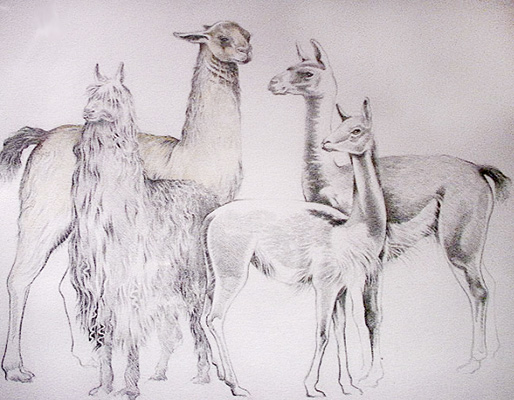Quipu: Counting with knots in the Inka Empire – 2003
- Record-keeping with knots
- The quipu and writing
- Tawantinsuyu , the Inka Empire
- The Quipu, and the needs of an empire
- Quipus and tribute
- Basic parts of a Quipu
- Making a Quipu
- Quipus and numerical values
- Narrative Quipus?
- Los distintos usos del Quipu
- Quipu of Arica
- Quipucamayoc , Lord of the Knots
- Quipus in the colonial era
- Epilogue
- To know more about Quipus
- Crédits and acknowledgements
Basic parts of a Quipu
The quipu has a very simple structure. Its “backbone” is a thick Primary Cord. Attached to this main cord are Pendant Strings, containing information recorded in the form of different kinds of knots, colored threads or other characteristics. Often, this basic structure is more intricate, as a result of the addition of Subsidiary Strings – attached to the Pendant Strings – that may reach up to 13 levels, and themselves bear various orders of subsidiaries. Some quipus also feature Top Strings – strings attached in such a way as to leave the main cord in the opposite direction from the Pendant Strings. Top Strings are usually associated with or connect sets or groupings of Pendant Strings. Occasionally, the numerical value recorded on the Top String is the sum of the values recorded on its attached set of Pendant Strings. This structure reflects a marked hierarchical arrangement of all of the quipu strings.
Quipus are generally composed of cotton or camelid (alpaca or llama) fibers, or a combination of these raw materials. Examples found on the coast of Peru, where cotton has long been abundant, are usually made of this fiber, while those encountered in the highlands are normally made of camelid fibers. Sometimes, quipu strings were manufactured with other materials, such as vegetal fibers, human hair, and even hair from the Taruca, the Andean deer.








































